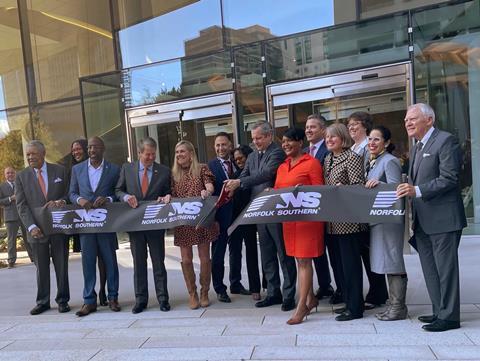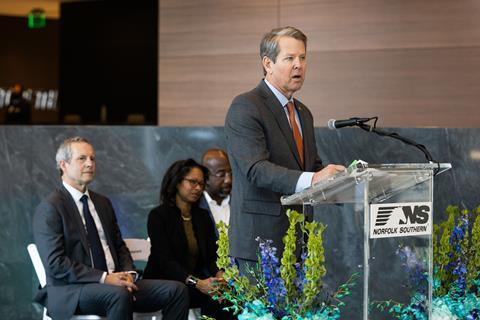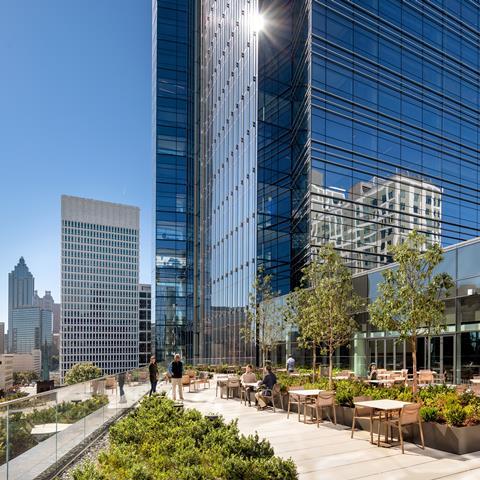
USA: Norfolk Southern formally inaugurated its new headquarters in Midtown Atlanta on November 10, with a ribbon-cutting ceremony attended by Georgia’s Governor Brian Kemp, Senator Raphael Warnock, Mayor Keisha Lance Bottoms and other civic leaders.

When Norfolk & Western merged with Southern Railway in 1982, NS located its headquarters in Norfolk, Virginia, while the operations and technical departments were based in Atlanta. But as Executive Vice-President & Chief Transformation Officer Annie Adams explained, ‘to be a leader in today’s rapidly evolving transportation and logistics market, the company needed to be more agile and work more collaboratively across organisational boundaries. Our new building brings us together in a central location, which was designed to boost collaboration and innovation.’

According to the railroad, the new headquarters has been ‘conceived, designed, and built around three core objectives’: using state-of-the-art technology; enabling an employee-centred environment that drives collaboration and wellness; and reflecting its commitment to sustainability.

Offering almost 70 000 m2 of office space, the building is intended to accommodate up to 3 500 of the railroad’s 19 000 employees when fully operational. Comprises two glass towers and a connecting hub, it forms part of a 1·4 ha campus in Tech Square that includes more than 80% green space. This provides open workspaces, street-level plazas, and rooftop terraces, along with staff amenities including a food hall, fitness centre, games room and on-site daycare facilities. A coffee shop, art installations and an artists-in-residence studio are open to the public.
‘There are many reasons we are proud to call Atlanta home’ said NS Chairman, President & CEO Jim Squires. ‘The city is diverse and culturally rich, with amenities that will ensure our employees and their families thrive. We plan to be engaged community partners, committed to the future of our new home.
‘Norfolk Southern’s presence will help accelerate the city’s competitive advantage in technology. Today our data scientists, engineers, and IT professionals are using artificial intelligence, machine vision, and advanced analytics to make the railroad industry safer, and improve service for our customers. At the same time, we will continue to lead our industry in sustainability.’

















